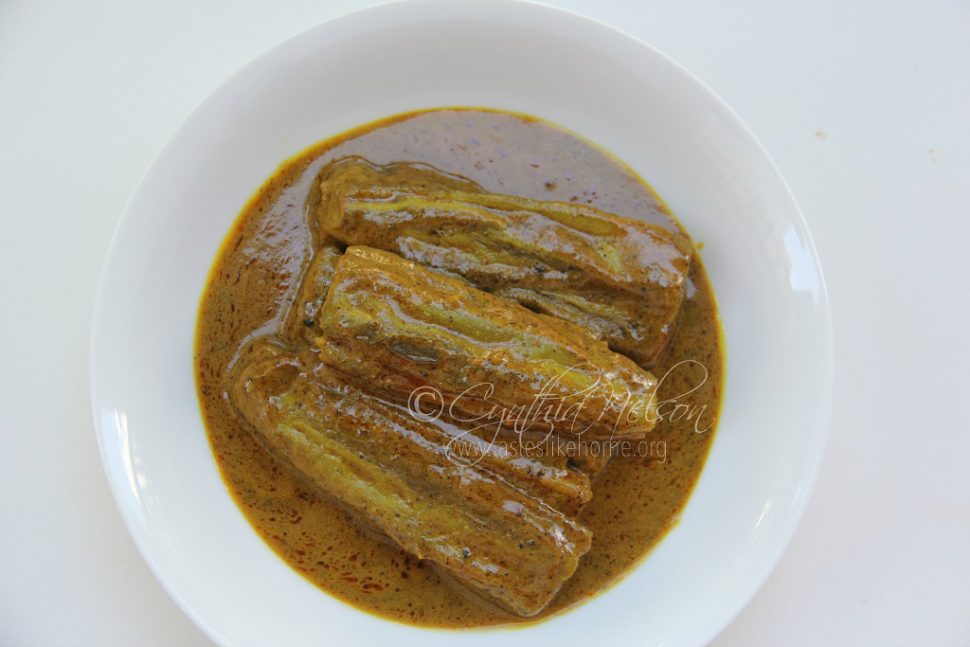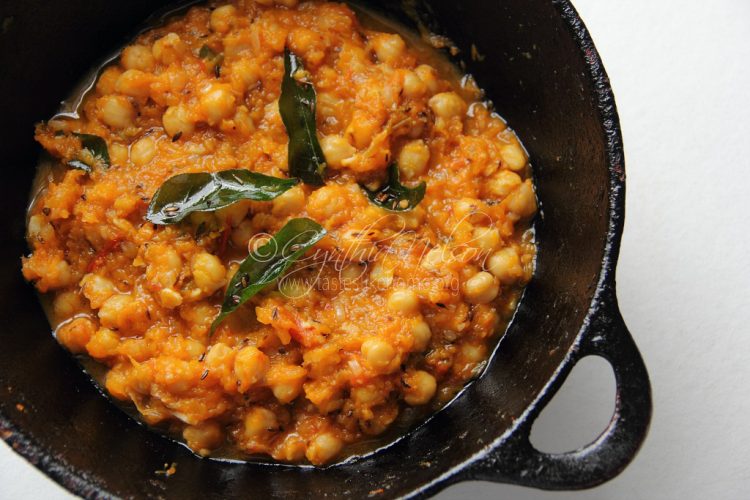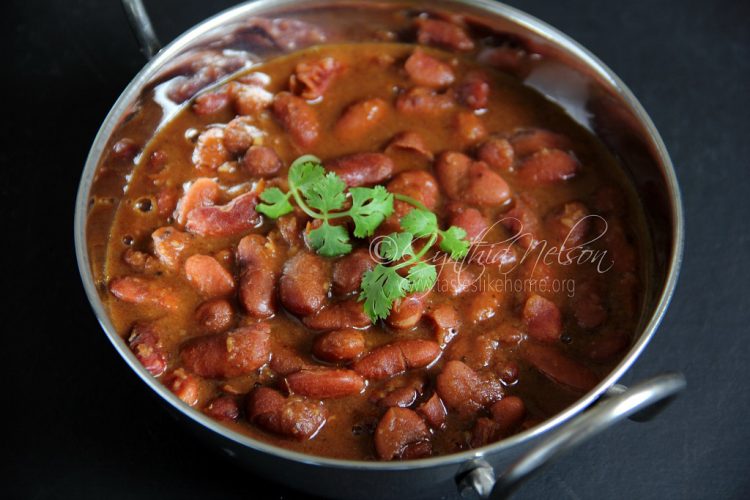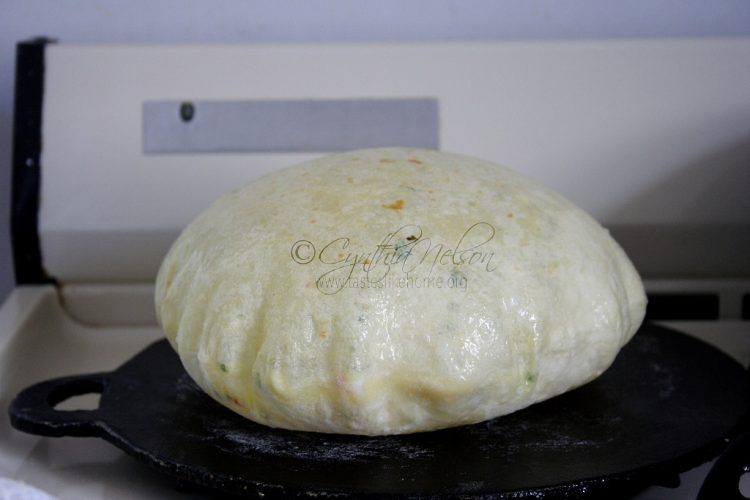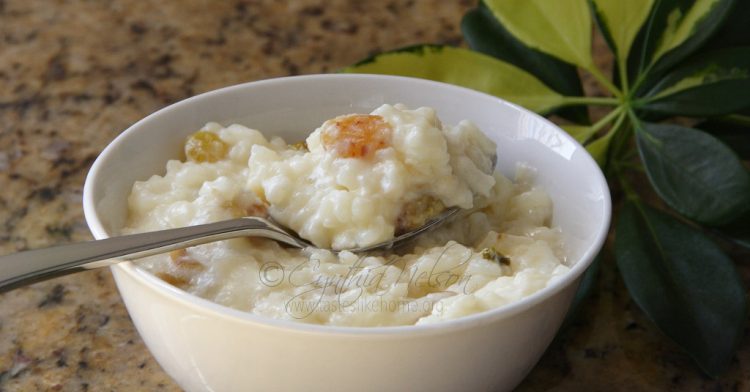Every year, whether is it Eid, Easter or Diwali – whatever the religious holiday, I cook and comfort myself with a taste of home. Every time I set about cooking for these holidays, I am flooded with memories of growing up and living in Guyana, family, rituals, and traditions. I miss my family. I miss my people. I miss Guyana, especially at the holidays.
This year, instead of the usual dhal, rice and plethora of vegetable dishes, in the style of seven-curry, I am changing up my menu. Every holiday, we are always on the lookout for new ideas to mix with the traditional ones.
If you have been reading me for a while, these dishes may not be new to you, however, this Diwali, I am putting them together as a menu for the holiday. And, just so that we are clear, you can’t always put a set of new dishes on a menu, because holidays are about rituals and tradition, therefore, for me, there must be sweet rice/rice kheer/rice pudding on a Diwali menu. It is a decadent way to end the feasting.
Here’s my menu:
● Pumpkin & Channa cooked with ginger, tomatoes and onions and finished
with toasted garlic, cumin/jeera and curry leaves.
● Karaila in Coconut Milk
● Rajma Masala (red kidney beans curry)
● Aloo (potato) roti
● White rice
● Cardamom (eliche) and Vanilla Sweet Rice
What do you think? Give some or all of it a try this holiday.
Subh Diwali!
Cynthia
Karaila in Coconut Milk Curry
INGREDIENTS
• 6 – 8 karaila (see notes below)
• 1 tablespoon chopped garlic
• 1 tablespoon chopped fresh root ginger
• 3 tablespoons chopped onions
• Minced hot pepper to taste
• 3 tablespoons chopped cilantro/fresh coriander (see notes below)
• 2 heaped tablespoons ground masala (see notes below)
• 1 heaped teaspoon ground turmeric (more if you like)
• Oil
• Salt to taste
• Fresh coconut milk (see notes below)
DIRECTIONS
1. Remove the top and bottom tips of each vegetable. Run a knife along one side of the vegetable, pry it open with your fingers and use a teaspoon to scrape out the seeds. Set aside.
2. Grind the garlic, ginger, onions, pepper and coriander to a smooth paste. Mix together the paste with the ground masala and turmeric.
3. Add 2 – 3 tablespoons of oil to a deep frying pan and place over medium high heat.
When oil is very hot, working in batches, fry the karaila until it is browned turning a few times. It will not brown all over and that’s okay. Repeat until all the vegetables are fried.
Set aside.
4. Check that you have about 2 tablespoons of oil in the pan (you will need to add a little after the frying).
5. Add the curry paste; reduce the heat to low and let cook until the oil separates from the masala. Add the karaila along with salt to taste, raise heat to medium and toss to coat the vegetable and mix. Cook for 4 – 6 minutes tossing a couple of times.
6. Add coconut milk to come 3/4 way up the vegetable (scrape the bottom of the pan to remove any stuck bits). Bring to a boil, cook uncovered for 5 minutes then reduce the heat to low, partially cover the pan and let cook until liquid has reduced to your desired consistency and a knife inserts easily into the karaila. Taste for seasoning (salt) and adjust if necessary.
NOTES
• If you get really large karaila, cut them in half (cross way) after removing the
seeds.
• Use your preferred ground masala mix or a combination. All masala mixes
are not the same; each has its own combination of spices.
• If you don’t have access to cilantro/coriander or chadon beni,
use celery.
• Canned coconut milk can be used in place of fresh coconut milk, however, be
sure to dilute the canned milk, as it would be too thick to use
Potato (Aloo) Roti
Yield: 10 – 12
INGREDIENTS
For dough:
• 3 cups all-purpose flour, plus extra for dusting
• ¾ teaspoon baking powder
• ¾ teaspoon salt
• 1 teaspoon sugar
• 2 tablespoons oil, plus extra for cooking the roti
• Lukewarm water to knead dough
(see notes below)
For potato stuffing:
• 2 pounds potatoes, peeled, boiled in salted water
• 1 tablespoon chopped cilantro
• 1 tablespoon thinly sliced green onions
• 1 teaspoon ground cumin
• Hot pepper to taste, finely minced
• Salt to taste (see notes below)
DIRECTIONS
Filling:
Mash the potatoes while warm with the other ingredients and set aside to cool completely.
Dough:
1. Mix all the ingredients in a bowl and knead to a soft dough for 2 – 3 minutes.
Lightly oil dough, cover bowl with plastic wrap and let rest for at least 30 minutes.
The longer the better but no longer than 1 hour.
2. Once the dough has rested, cut into equal pieces – larger or smaller depending on
the size of your tawah.
3. Using your hands, form the dough into a small circle (about 3 inches)
4. Stuff the dough with the potato filling – about 3 – 4 tablespoons but do not over
stuff the dough.
5. Close up the dough by bringing the ends together and pinch to seal completely.
6. Place seam-side down on a lightly oiled baking sheet or large plate/platter; dab a
little oil on top of the stuffed do to prevent a skin forming.
7. Repeat until all the dough is filled. Cover with plastic wrap and let rest for at least
30 minutes; longer if you can but no more than 1 hour.
To cook:
1. Line a large plate or bowl with a cloth kitchen towel and wax paper. Set aside. Also
cut some wax paper to place in between each cooked roti so that they do not stick
together.
Heat tawah or flat iron griddle pan on medium-low heat. The pan is well heated is
when you add a drop of water, it sizzles and dries up in 3 seconds.
3. Lightly flour working surface and rolling pin.
4. Take one of the stuffed dough, form into a disk using your hands, place on work
surface and roll making sure the stuffing spreads throughout, keep turning the
dough at a 90-degree angle to get it round (you may have to keep dusting your
rolling pin if the dough sticks).
5. Cook roti on both sides, lightly brushing each cooked side with a little oil (it’s
almost light toasting of the roti)
6. Transfer to lined plate (remember to put a piece of the wax paper between each
roti to prevent them sticking to each other and steaming)
7. Repeat until all the roti is cooked.
8. Serve hot or at room temperature as is or with a pickle.
NOTES
• If you live in a tropical climate such as the Caribbean, regular tap water will do; it has the right temperature.
• If you have boiled the potatoes in well-salted water, you should not need to add
more when making the filling. The potato is best seasoned when cooked in the
salted water.
• Let the potatoes drain well and dry out for a bit before mashing them. You want the
filling to be dry; however, mash the potatoes while they are still warm. They will
continue to dry whilst cooling after being mixed with the other ingredients.
• The dough needs a nice long resting time, hence the elasticity and the ability to puff
up.
• Don’t fret if the dough tears a little at the edges, when cooking press on the torn
edges and it will still puff up.
Pumpkin & Channa
INGREDIENTS
• 4 tablespoons oil
• 1 cup finely chopped onions
• ½ cup chopped tomatoes
• 1 tablespoon finely minced ginger
• ½ teaspoon ground turmeric
• Minced hot pepper to taste
• Salt to taste
• 3 pounds pumpkin, seeds removed, peeled and chopped into 2-inch chunks
• 3 cups rehydrated chick peas, channa, cooked in lightly salted water and
drained well
For tadka/seasoning:
• 2 tablespoons oil
• 2 teaspoons whole cumin/geera
• 1 tablespoon thinly sliced garlic
• 6 – 8 curry leaves
DIRECTIONS
1. Add oil to a large deep pan and place over medium heat until hot but not smoking.
2. Add onions, tomatoes, ginger, turmeric and salt to taste; mix well, reduce heat to
low and cook until the onions are soft and tomatoes pulpy and dissolve easily.
3. Raise heat to medium high for 1 minute then add pumpkin, toss with onion-tomato
mixture, season with salt, mix well, cover, reduce heat to low and cook for 12 – 14
minutes.
4. Remove lid and mash some of the pumpkin, leaving the mixture coarse, chunky.
Add channa and toss well to mix. Raise heat to high, cover pan and cook for 5
minutes then reduce heat to low and cook for another 5 minutes. Taste for salt and
add if necessary. Shut of heat and leave pan covered on the burner.
5. In a small frying pan or metal ladle, add 2 tablespoons oil until hot; add
cumin/jeera and cook for 30 seconds, then add garlic and fry until just golden,
remove pan/ladle from heat and add curry leaves (they will pop). Pour the oil and
spices over the pumpkin and stir well to incorporate. Let sit for 5 minutes before
serving.
Rajma Masala (Red Kidney Bean Curry)
Thick and creamy with great depth of flavour, you won’t believe that beans could taste this good. The plump cooked beans are like little morsels of meat and while this dish is usually served with rice or roti, don’t be surprised if you find yourself armed with only a spoon. It is that good.
Rajma Masala is a very popular North Indian dish. It is sometimes referred to as Punjabi Rajma Masala. The beans are cooked separately and then combined with a masala paste, pureed tomatoes and the cooking liquid from the beans. The dish is simmered until thickened. It’s different from the curries we enjoy in the Caribbean.
I’ve adapted the recipe to use ingredients that are easy to find. Some recipes call for hing (asafoetida), black cardamom and fenugreek (methi) leaves.
INGREDIENTS
For the curry:
• 4 cups rehydrated kidney beans (see notes below)
• Salt to taste
• 3 tablespoons oil
• 2 teaspoons red chili powder
• 1 teaspoon ground turmeric
• 2 teaspoons amchar or garam masala
• 2 cups pureed tomatoes (see notes below)
• Salt to taste
• Fresh cilantro/coriander
For masala paste:
• 4 tablespoons oil
• 1 x 3-inch piece cinnamon stick, broken into small pieces
• 2 heaped teaspoons whole geera/cumin seeds
• 6 whole cloves
• 1 teaspoon fennel seeds
• 2 cups finely chopped onions
• 2 tablespoons chopped fresh ginger
• 2 tablespoons chopped garlic
• Minced hot pepper to taste
DIRECTIONS
1. Rinse and drain the rehydrated beans and add to pressure cooker along with 4 – 5
cups of water and 1 teaspoon salt. Cover, place on medium heat and bring to a
pressure; pressure for 6 – 8 minutes (the time would vary depending on your
pressure). The beans should be cooked through and soft but not completely
broken down. Strain and reserve the cooking liquid.
2. While the beans are cooking, make the masala paste – heat the oil in a pan and
add the whole spices (cinnamon, cloves, geera and fennel seeds); fry in oil until they
just start to change colour. Add the onions, ginger, garlic and pepper; reduce heat
to low and cook until the onions are soft. Remove the entire mixture, including
residual oil and grind to a paste. Set aside.
3. Heat 2 tablespoons of oil on medium heat. Add the masala paste and cook for 1
minute then chili powder, turmeric, and amchar or garam masala and cook for
another minute.
4. Stir in the pureed tomatoes and mix well, bring to boil and then reduce heat and
simmer for 4 – 6 minutes with the pot uncovered.
5. Raise heat to medium high and add peas and reserved cooking liquid, stir well and
bring to a boil. Season with salt and cook for 12 – 15 minutes or until the gravy has
thickened and reduced; if you like, mash some of the beans in the pan to help
thicken the gravy. For added richness, stir in 2 tablespoons of butter or ghee to
melt in the curry.
6. Garnish with fresh coriander/cilantro and serve with rice or roti.
NOTES
• You can try making this curry with canned kidney beans but it will not taste the
same; the texture and flavour would be different.
• For added flavour, you can cook the kidney beans with a bay leaf and 2 crushed
green cardamom pods – discard the bay leaf and cardamom after cooking.
• While you can use canned pureed tomatoes, I would not recommend it; the canned
puree will contain a certain degree of acidity that can disturb the flavour of the
curry, the best option is to chop and puree/blend fresh tomatoes and pass the
mixture through a sieve to remove the seeds and skin.
Vanilla-Cardamom Sweet Rice/Pudding
INGREDIENTS
• 1 cup long grain white rice, washed
• 4 whole cloves
• 3 green cardamom pods, crushed
• 1 vanilla bean pod, de-seeded
• 4 ½ cups water, divided (3 cups + 1 ½ cup)
• 4 cups whole milk, divided (3 cups + 1 cup)
• Granulated sugar to taste, about ¾ cup
• ½ cup raisins, soaked in rum, drained (optional to soak in rum)
DIRECTIONS
1. Add 3 cups water, 3 cups milk rice, cloves, cardamom, vanilla bean (pod and seeds)
to pot. Stir to mix and bring to a boil on medium high heat (be sure to pay
attention to the pot, as it boils, the milk tends to froth and rise). Cook on medium
high heat for 8 minutes then reduce to simmer/low and cook covered for 20
minutes.
2. Now add remaining 1 ½ cups water and 1 cup milk along with raisins and sugar.
Stir to dissolve sugar.
3. Cook on low heat/simmer for another 15 – 20 minutes. Taste and adjust for
sweetness if necessary.
4. Serve warm or at room temperature or place into individual glass or bowls, chill in
refrigerator and serve.
NOTE
Instead of sugar, you can use condensed milk to sweeten the pudding.
